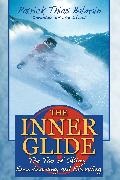Share
Patrick Thias Balmain
The inner glide
English · Paperback / Softback
Description
Zusatztext " . . . Balmain presents the case that movement on snow leads to stillness! harmony! joy! and a balance with Earth's gravity. Conscious movement results in right gesture! culminates in body-mind balance. . . . Today's Books puts The Inner Glide on 'The A-List.'" Informationen zum Autor Patrick Thias Balmain is a professional skier and snowboarder. In 1992! he created the first skwal! introduced the first commercially manufactured model! and established skwal races on the circuit of international competition. A ski! snowboard! and skwal instructor in Courcheval! France! he has trained countless practitioners! instructors! and competitors in Europe! North America! and Japan. Klappentext The Inner Glide presents a unique and original practice that will challenge ski enthusiasts! snowboarders! or skwallers! whether experts or beginners! to make the transition from the raw quest for sensation--itself a source of imbalance--to a more subtle and harmonious practice based on internal centering. from Chapter 6 From Combat to Harmony Most of us have a relationship to the outside world based on conflict, the power struggle. It is quite tiring. One must always be on the alert. Could there be another way of doing things? That is exactly what we are going to learn in this chapter. To Move Toward . . . or Distance Yourself From Because of our characters and personal histories, each of us has a tendency either to move toward people, things, novelty or to move away from them. None of us are all one or the other; we are one or the other depending on the context. For example, I am shy and have a tendency to distance myself from people by refusing to make contact; on the other hand, when I love an activity I go toward it without any doubt or hesitation. We can watch ourselves and determine if we are more “moving toward” or “going away from” kinds of people. Once the pattern has been recognized, we can begin to craft a method of working on ourselves to break our habitual patterns. Physically speaking, a person who “goes toward” will have the tendency to favor skiing on the balls of his feet, whereas someone who “moves away from” will have a tendency to rely more on his heels. The first stage is the realization of this fact, the second is to recognize it in yourself and accept it in the action, and the third is to begin to reorient your body. This practice consists of experiencing the two extreme positions and provoking and feeling the state of mind associated with each. It is not a question of one being a “good” attitude and the other being “bad”; they are two attitudes that inspire physical and psychological tensions. To get out of this chain of interlinked tensions, we start by discovering how to establish a sense of being rooted in the Earth. This rooted sensation consists of resting on your feet in a standing position and feeling the ground and the contact of the soles of your feet with the ground. If the mass of your body is projected over the middle of your feet, your body can naturally relax and be freely available for whatever is required of it. This stance permits you to detach yourself from achieving the goal (“moving toward”) or fleeing (“moving away from”) through orienting your energy toward the center of the body and, more specifically, in that part of the body that connects the body to the Earth: the soles of the feet. This orientation helps us to break free of the automatic response of either moving toward or distancing ourselves from an objective. But be warned. This impulse will come back at a gallop. When the impulse arises to psychologically extend yourself toward a particular objective, the old habits will reemerge and restore the chains of tensions to their original place. What can you do to avoid this? Once you have planted your “root” it needs to be fed--in other word...
Product details
| Authors | Patrick Thias Balmain |
| Assisted by | Jon E. Graham (Translation) |
| Publisher | Destiny books |
| Languages | English |
| Product format | Paperback / Softback |
| Released | 30.09.2007 |
| EAN | 9781594771606 |
| ISBN | 978-1-59477-160-6 |
| Dimensions | 150 mm x 225 mm x 10 mm |
| Subject |
Guides
> Sport
|
Customer reviews
No reviews have been written for this item yet. Write the first review and be helpful to other users when they decide on a purchase.
Write a review
Thumbs up or thumbs down? Write your own review.

